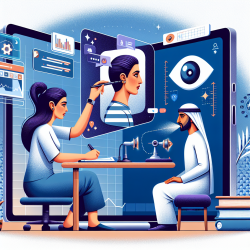Introduction
In the realm of speech-language pathology, the need for evidence-based practices is paramount. The Survey of the Health of Wisconsin (SHOW) provides a robust infrastructure for population health research, offering insights that can be instrumental in shaping interventions and improving outcomes for children. This blog explores how practitioners can leverage the findings from SHOW to enhance their skills and make data-driven decisions that benefit children's health and development.
Understanding SHOW: A Foundation for Evidence-Based Practice
The Survey of the Health of Wisconsin (SHOW) is an innovative program designed to gather comprehensive health-related data across Wisconsin. By employing a series of independent annual surveys, SHOW collects information on physical, mental, and oral health, alongside demographic, behavioral, and lifestyle factors. This data serves as a critical resource for identifying health disparities and evaluating community-specific interventions.
For speech-language pathologists, SHOW's data can be a treasure trove of information, offering insights into the social, physical, and environmental determinants of health that impact children's communication and language development.
Key Insights from SHOW for Practitioners
- Holistic Understanding of Health Determinants: SHOW emphasizes the importance of considering a broad range of health determinants, including biological, behavioral, and environmental factors. Practitioners can use this holistic approach to better understand the multifaceted influences on a child's speech and language development.
- Community-Specific Data: The program's ability to assess health disparities at the community level provides practitioners with localized data. This can guide the development of targeted interventions that address specific needs within a community, enhancing the effectiveness of therapy for children.
- Longitudinal Data for Tracking Progress: SHOW's longitudinal component allows for the tracking of health outcomes over time. Practitioners can use this data to monitor the long-term impact of interventions and adjust strategies as needed to ensure optimal outcomes for children.
Encouraging Further Research and Implementation
While SHOW provides a foundational infrastructure for population health research, it also serves as a platform for ancillary studies. Practitioners are encouraged to engage in further research, utilizing SHOW's data to explore new questions and develop innovative interventions. By participating in or initiating studies that align with SHOW's framework, speech-language pathologists can contribute to a growing body of evidence that supports effective practices.
Moreover, practitioners can advocate for the integration of SHOW's findings into policy and program planning, ensuring that interventions are informed by the latest data and tailored to the unique needs of children in their communities.
Conclusion
The Survey of the Health of Wisconsin (SHOW) offers invaluable insights for speech-language pathologists seeking to enhance their practice through data-driven decisions. By leveraging SHOW's comprehensive data, practitioners can develop targeted interventions, monitor progress, and contribute to a broader understanding of the factors influencing children's health and development.
To read the original research paper, please follow this link: The Survey of the Health of Wisconsin (SHOW), a novel infrastructure for population health research: rationale and methods.










